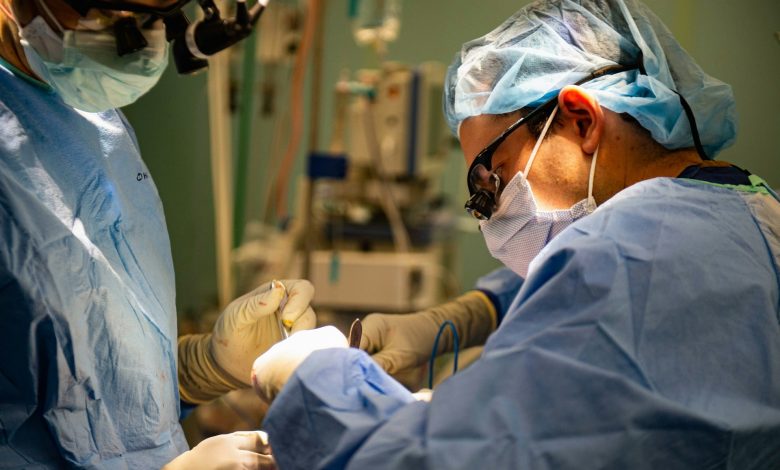
The field of cosmetic surgery is undergoing a rapid transformation, fueled by groundbreaking technological innovations that are redefining both the art and science of aesthetic enhancement. No longer limited to conventional surgical methods, today’s procedures integrate a spectrum of advanced technologies that prioritise precision, safety, and patient satisfaction. From digital imaging and artificial intelligence to robotic systems and next-generation laser techniques, these tools empower surgeons to deliver results with exceptional accuracy and a new level of personalisation.
Innovation is also driving a shift toward minimally invasive approaches, shortening recovery times and enhancing overall outcomes. As technology continues to merge seamlessly with surgical expertise, it is setting new industry benchmarks and reshaping every stage of the patient experience. Gaining insight into these cutting-edge advancements is key to understanding the future of cosmetic surgery.
This article explores some of the most notable technologies shaping the future of cosmetic surgery in 2025.
3D Imaging
Among the most transformative innovations in modern cosmetic surgery is the integration of 3D imaging and virtual surgical simulation. This technology enables both patients and surgeons to visualise and preview expected results before any procedure takes place. Using advanced software, highly detailed 3D models of the patient’s anatomy can be generated, allowing outcomes to be assessed from multiple angles and helping establish realistic expectations.
The ability to digitally compare various surgical options, such as a mini tummy tuck versus a full tummy tuck, enhances patient understanding and strengthens communication between patient and surgeon. Many clinics such as Amber Surgery, now offer virtual consultations featuring interactive 3D simulations, which not only boost patient confidence but also support more accurate and tailored pre-operative planning for surgeons.
Ultrasound-Assisted Liposuction (VASER Technology)
Liposuction remains one of the most sought-after cosmetic procedures, and technological advancements have significantly enhanced both its technique and outcomes. Ultrasound-assisted liposuction. commonly known by the brand name VASER, uses targeted ultrasound energy to gently emulsify fat cells before removal. This approach minimises trauma to surrounding tissues, resulting in less bruising, reduced swelling, and faster recovery.
VASER technology is especially valued for its precision in sculpting and muscle definition, making it ideal for high-definition liposuction and athletic body contouring. Compared to traditional methods, patients typically experience smoother, more refined results and shorter downtime, even in delicate areas such as the inner thighs, arms, and abdomen.
Robotic Surgery Systems
Robotic technology is steadily transforming the field of cosmetic surgery, offering a new level of control, consistency, and precision. Robot-assisted procedures allow for extremely fine, stabilised movements that surpass the natural limits of the human hand, significantly enhancing accuracy during intricate operations. Although the artistic nature of aesthetic surgery limits full automation, robotic systems are increasingly being adopted in reconstructive and complex cosmetic procedures where precision is paramount.
These systems help minimise tissue trauma, shorten operation times, and accelerate recovery. Their reliability also contributes to fewer complications and more predictable, refined aesthetic results. The synergy between surgical expertise and robotic assistance represents a major leap forward in the evolution of cosmetic surgery.
Advanced Laser Technologies
Laser technology has become integral to modern cosmetic procedures, transforming both noninvasive and minimally invasive treatments. Contemporary laser systems effectively address a wide range of concerns, including skin firmness, scar reduction, pigmentation correction, and the treatment of visible blood vessels, making them indispensable tools in aesthetic medicine.
In body contouring, laser-assisted liposuction uses concentrated light energy to liquefy fat cells, allowing for smoother removal while minimising swelling and bruising. Lasers also play a pivotal role in skin rejuvenation therapies that stimulate collagen production, improving texture, tone, and elasticity without the need for surgery.
Artificial Intelligence and Machine Learning
Artificial intelligence and machine learning are emerging as transformative forces throughout every stage of cosmetic surgery. These technologies analyse patient-specific anatomical data to help surgeons design treatment plans that align closely with individual aesthetic goals. By combining medical imaging with predictive modelling, AI can simulate potential outcomes and guide decision-making before any procedure begins.
During surgery, real-time AI monitoring provides valuable feedback by identifying subtle variations or potential complications as they occur, allowing surgeons to make more informed adjustments in the moment. This level of intraoperative support enhances safety while maintaining surgical artistry.
Beyond the operating room, AI-driven post-procedure monitoring systems continue to support recovery by detecting early signs of complications and tracking healing progress remotely. The integration of big data and continuous machine learning enables ongoing refinement of both surgical techniques and patient outcomes.
Regenerative Medicine and 3D Bioprinting
The future of cosmetic surgery is increasingly being shaped by regenerative medicine, a field that harnesses the body’s own healing mechanisms to restore and rejuvenate tissues. One notable advancement is stem cell–enhanced fat transfer, which improves the survival rate and quality of transplanted fat. This results in outcomes that are not only longer lasting but also more natural in appearance and texture.
Building on these principles, 3D bioprinting introduces a new dimension to surgical innovation. By enabling the creation of customised tissue structures and implants that closely replicate natural anatomy, it opens remarkable possibilities for reconstructive and aesthetic surgery alike. This technology holds tremendous potential for cases requiring the precise restoration of facial features or other body parts, offering truly patient-specific and biologically compatible solutions.
Augmented and Virtual Reality
Augmented and virtual reality technologies are transforming both the planning and patient experience in cosmetic surgery. Augmented reality allows surgeons to overlay digital images of anatomical landmarks directly onto the patient, enhancing precision in incision placement and implant positioning.
For patients, virtual reality provides an immersive way to visualise potential surgical outcomes during consultations, offering a clear and interactive understanding of what to expect. Beyond planning, VR is also being explored as a tool for managing pain and reducing anxiety during recovery, further enhancing the overall patient experience and extending the benefits of technology beyond the operating room.
Telemedicine
Digital communication platforms and telemedicine are playing an increasingly important role in cosmetic surgery, especially when it comes to consultations and follow-up care. Patients can connect with surgeons across the globe to discuss procedures, review 3D simulations, and receive professional guidance without the need for travel.
Telemedicine enhances accessibility and convenience while supporting continuity of care. It also streamlines appointment scheduling, patient data management, and post-operative monitoring, making the entire surgical journey more efficient and patient-centred.
Conclusion
Modern technology is revolutionising cosmetic surgery by integrating cutting-edge tools from 3D imaging to AI, robotics, regenerative medicine, and digital communication. Each innovation contributes to more refined surgical planning, enhanced procedural accuracy, and improved patient experiences and outcomes. As technology continues to evolve, the future of cosmetic surgery promises even greater levels of customisation, safety, and effectiveness, enabling patients to realise their aesthetic aspirations like never before.



